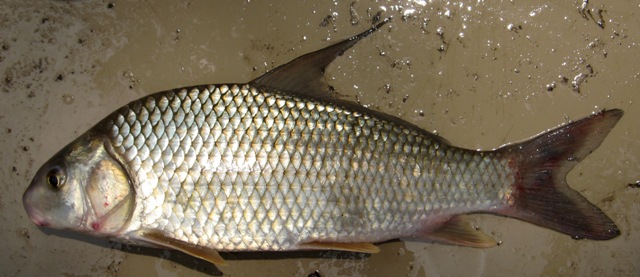Quillback Carpsucker
(Carpiodes cyprinus)

The quillback carpsucker is native to Ohio and is the most widely distributed of the three carpsucker species in the state.
Description
Quillback carpsuckers have a small sub-terminal (ending below tip of snout) mouth. The back is moderately arched and the lateral line is nearly straight. They are silvery on the sides with a white belly and the lower fins can be orange or yellow. The tale and dorsal fins are gray to silver in color. The first several rays of the dorsal fin form a long quill. Unlike the river and highfin carpsuckers they have no fleshy knob on the front edge of the lower lip. There are two subspecies of quilback carpsuckers found in Ohio, the central quillback carpsucker (Carpiodes cyprinus hinei) and the Northern quillback carpsucker (C. c. cyprinus). Northen quillback carpsuckers are deeper bodied and have smaller eyes than the central quillback carpsuckers.
Habitat and Habits
Northern quillback carpsuckers are found only in Lake Erie and the first mile or two of some of its larger tributaries. They can be found throughout the lake but are most common in depths of 15-25 feet. The central quillback carpsucker is found throughout inland Ohio in most streams and rivers. They are most common in the low gradient streams of northwestern and southeastern Ohio. They can also be rather abundant in some of Ohio's larger reservoirs. Both adults and young often feed in large schools, moving slowly over a sand or gravel bottom.
Reproduction and Care of the Young
Quillback carpsuckers spawn between early April and late May. The eggs are randomly deposited over a sand or mud bottom and left in quiet water. Females lay between 15,000 to 60,000 eggs.